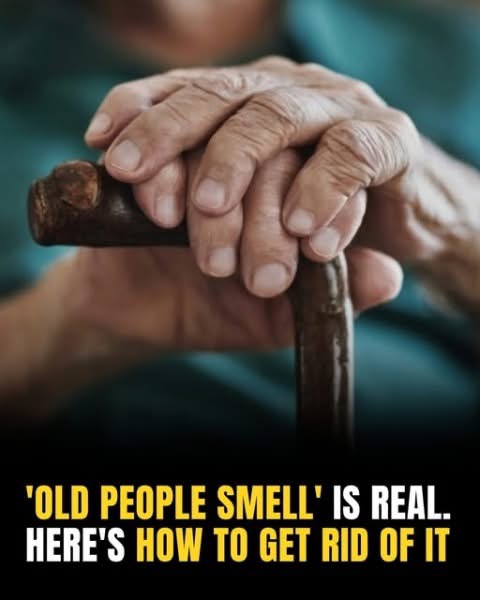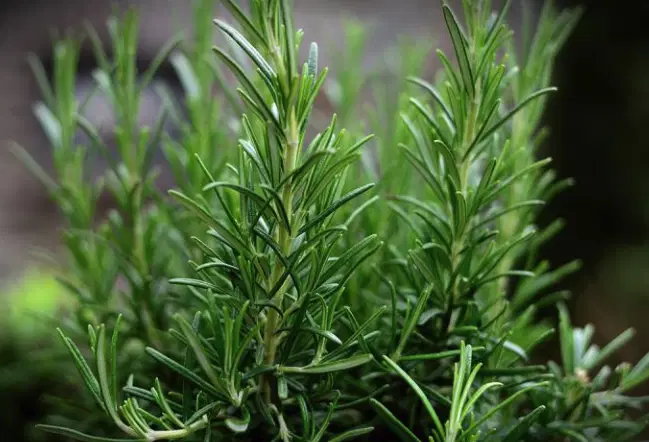The Truth About “Old Person Smell”: What Causes It And How To Get Rid Of It
We all know it, even if we’re too polite to talk about it…
That faint, musty scent in our grandparents’ house. The unique smell in senior care homes. A subtle but distinct odor that clings to clothes and lingers in the air. For years, people have referred to it—half-jokingly—as “old person smell.” And it’s not just a social stereotype. And science has a name for it.
This naturally occurring scent is not caused by poor hygiene or neglect. In fact, even the cleanest, most meticulous older adults may produce it. The culprit? A chemical called 2‑nonenal, and its appearance marks a shift in your body chemistry that begins in middle age.
But before you reach for heavy perfumes or chemical sprays, you should know this: there’s a more effective, healthier way to combat it—and it starts inside your body.

What Exactly Is “Old Person Smell”?
Researchers have identified 2‑nonenal as the key compound responsible for the characteristic odor. It’s an unsaturated aldehyde that forms through a process known as lipid peroxidation—in simple terms, the breakdown and oxidation of skin fats.
As we age, our skin undergoes major changes:
- Sebaceous glands begin to produce more unsaturated fatty acids.
- Antioxidant defenses weaken, leading to more free radicals.
- Skin cell turnover slows, meaning dead cells and oxidized fats stay on the skin longer.
This perfect storm results in the formation of 2‑nonenal, which has a greasy, grassy, slightly metallic scent. It’s unique to older adults and cannot be effectively washed off with regular soap or body wash because it binds to the skin’s lipids.
In a 2001 study published in the Journal of Investigative Dermatology, researchers confirmed that individuals over 40 had significantly higher levels of 2‑nonenal in their body odor than younger participants. Interestingly, the scent wasn’t considered offensive by most people—just distinctive.
Why It Happens: More Than Just Age
Aging is only part of the story.
Certain lifestyle factors can speed up oxidative stress in the body, increasing the production of 2‑nonenal:
- Diets high in processed foods and trans fats
- Exposure to pollution and toxic chemicals
- Chronic stress
- Poor hydration
- Lack of physical activity
What’s more, hormonal shifts, particularly during menopause or andropause, contribute to changes in skin chemistry. As estrogen and testosterone levels decline, sebum (skin oil) composition alters, creating a more favorable environment for oxidation and bacterial activity.
Even certain medications and underlying health conditions—like diabetes or kidney disease—can subtly affect body odor by changing your body’s natural detoxification processes.
The Problem With Conventional Solutions
You might assume that a good scrub and some deodorant would solve the problem. Unfortunately, most traditional hygiene products are powerless against 2‑nonenal. That’s because:
- It sticks to skin lipids and doesn’t wash off easily
- It often builds up gradually, unnoticed by the individual
- Common soaps and shampoos are not formulated to neutralize oxidized fatty acids
Worse, some hygiene products contain harsh chemicals and artificial fragrances that irritate aging skin, potentially making things worse in the long run.
So if it’s not about washing more, what’s the answer?
The Inside-Out Approach: What Science Suggests
The best way to prevent or minimize 2‑nonenal production is to support the body’s natural defenses against oxidation. That means:
1. Boost Antioxidants Through Diet
Antioxidants are your skin’s frontline defense against oxidative stress. Focus on:
- Mushrooms, especially shiitake and oyster: Rich in ergothioneine, a powerful antioxidant that protects cells from aging and reduces skin oxidation.
- Berries (blueberries, blackberries): High in flavonoids and vitamin C.
- Leafy greens: Spinach, kale, and chard are full of skin-nourishing nutrients.
- Green tea: Contains EGCG, an antioxidant shown to reduce oxidative damage in skin cells.
2. Try Natural Compounds Like Spermidine
Spermidine—a compound found in wheat germ, aged cheese, and mushrooms—has been shown to stimulate autophagy, a cellular “cleansing” process that removes damaged components. This rejuvenates skin cells and may reduce the buildup of smelly compounds on the skin.
3. Use Specialized Skincare Products
Japanese companies were among the first to develop cleansers and lotions specifically designed to neutralize 2‑nonenal. These often contain ingredients like:
- Persimmon extract
- Green tea
- Charcoal
- Citric acid
These natural compounds help break down oxidized fats without irritating the skin.
4. Manage Stress and Sleep
Chronic stress raises cortisol levels, which accelerates aging and oxidation. Adequate sleep, deep breathing, and daily movement all help regulate hormones and reduce stress-related body chemistry shifts.
Can This Smell Indicate Something More Serious?
In some cases, yes.
If someone experiences a sudden change in body odor, especially alongside confusion, memory loss, or behavioral changes, it could be a warning sign of a neurological condition, including Alzheimer’s disease. In fact, recent research shows that dogs and electronic sensors can detect specific odor markers in people with cognitive decline.
That’s not to say every odor is a cause for alarm—but it’s worth noting. The human body is constantly communicating with us, and scent is one of its more subtle signals.
Embrace Age, Not Oxidation
Getting older is a gift—not a flaw. But the biological changes that come with age can produce effects we’d rather avoid, like the infamous “old person smell.” The good news? You don’t have to accept it as inevitable.
By nourishing your body from the inside out, using smart skincare, and reducing your exposure to oxidants, you can help your skin age gracefully—and stay fresh along the way.
So next time someone mentions that curious scent associated with aging, you’ll know the truth: it’s chemistry, not cleanliness. And with a few smart, science-backed choices, it’s something we can change.
Please SHARE this article with Family and Friends and let us know what you think in comments!






